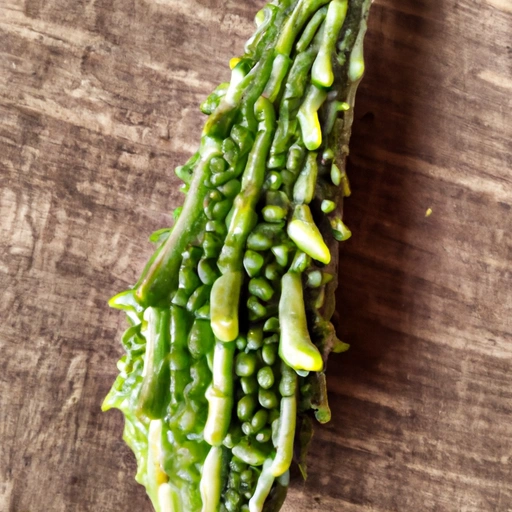Bitter Melon
Description

Bitter melon, also known as bitter gourd or Momordica charantia, is a tropical and subtropical vine of the family Cucurbitaceae, widely grown for its edible fruit. The fruit itself is elongated, with a rough, warty exterior and is most commonly green in color. Its flesh is crunchy and watery in texture, and as the name suggests, it has a distinct bitter taste that can vary in intensity depending on the maturity of the fruit.
Common uses
Bitter melon is often used in a variety of culinary traditions. In Asian cuisine, it is typically served as a vegetable in curries, stir-fries, and stuffed dishes. The fruit is also consumed as a juice or tea, and it is sometimes pickled for preservation. Aside from culinary uses, bitter melon is employed in traditional medicine for managing diabetes, digestion issues, and other health conditions.
Nutritional value
Calories
A 100-gram serving of raw bitter melon provides approximately 17 kcal (calories).
Protein
This serving size contains about 1 gram of protein.
Fat
Bitter melon is low in fat, with less than 1 gram per 100 grams.
Carbohydrates
It contains about 3.7 grams of carbohydrates, primarily from fiber.
Vitamins
Bitter melon is a good source of vitamin C, providing about 84 mg, as well as containing vitamin A, with 471 IU per 100 grams.
Minerals
It also provides modest amounts of minerals including potassium (296 mg), magnesium (17 mg), and calcium (19 mg).
Health benefits
Bitter melon is believed to have several health benefits, including aiding in blood sugar control, which may be beneficial for individuals with diabetes. Its high vitamin C content supports immune function, while its antioxidants may help in fighting inflammation and protecting against certain diseases.
Potential risks
Despite its health benefits, bitter melon should be consumed in moderation as it contains compounds that can cause abdominal pain and diarrhea if ingested in large amounts. It is also not recommended for pregnant women as it may stimulate uterine contractions.
Common recipes
Recipes featuring bitter melon include Indian 'Karela fry', Chinese 'bitter melon with eggs', and Filipino 'pinakbet' stew.
Cooking methods
Common cooking methods for bitter melon include stir-frying, boiling, steaming, and sautéing. It can also be hollowed out and stuffed with various fillings before cooking.
Pairing with other ingredients
Bitter melon pairs well with strong flavors such as garlic, chili peppers, fermented black beans, and pungent spices. It's also commonly balanced with sweet or savory ingredients to offset its bitterness.
Summary
Bitter melon is a distinctive fruit known for its sharp flavor and potential health benefits. It is used across various cuisines and can be prepared in multiple ways. While it is nutritious and has medicinal uses, it should be enjoyed carefully due to its potential risks.